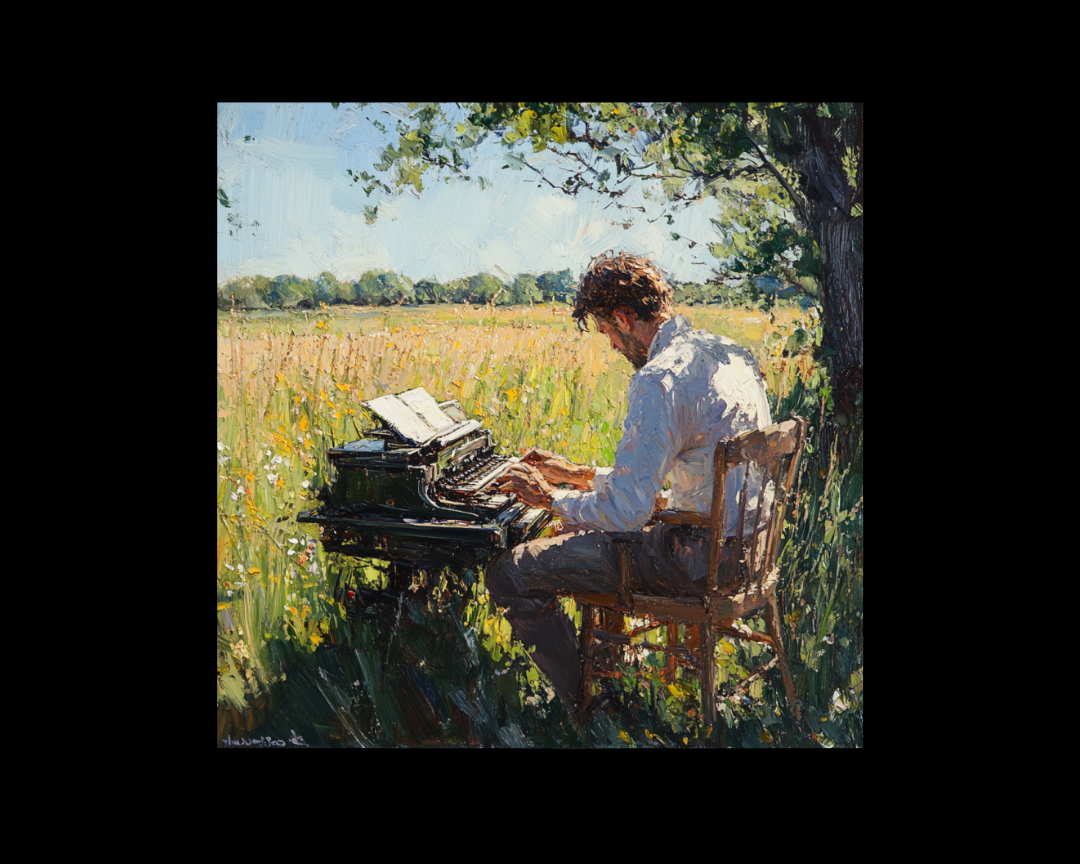The Role of Themes in Fiction: Adding Depth and Meaning to Your Stories
Themes are the backbone of storytelling, providing depth and meaning that resonate with readers on a profound level. In literature, themes explore...
5 min read
 Writing Team
:
Jun 16, 2025 9:00:00 AM
Writing Team
:
Jun 16, 2025 9:00:00 AM
-Jun-09-2025-07-34-30-3557-PM.png)
Every writer faces the same daunting question: what makes readers care about made-up people doing fictional things? The answer lies not in clever plot twists or beautiful prose, but in something deeper—universal themes that connect imaginary events to real human experience. These recurring ideas transform entertainment into art, stories into mirrors that reflect our deepest truths.
Theme is literature's secret weapon, the invisible force that makes readers weep over characters they've never met and remember books decades after reading them. Understanding how master writers employ these themes can elevate your own work from forgettable fiction to lasting literature.
Theme represents the core message or underlying idea that gives your story meaning beyond its surface events. While plot asks "what happens next?", theme asks "why does this matter?" It's the difference between a sequence of events and a meaningful exploration of human experience.
Themes work on multiple levels simultaneously. To Kill a Mockingbird tells the surface story of a lawyer defending a Black man in 1930s Alabama, but its deeper themes explore justice, prejudice, and moral courage. Readers remember the thematic resonance long after forgetting specific plot details.
The most effective themes feel universal—they tap into experiences and emotions that transcend cultural boundaries. Love, death, family, identity, and justice matter to readers regardless of their background because these concepts shape every human life. Writers who understand this principle can create stories that speak to diverse audiences across time and geography.
The eternal conflict between good and evil remains literature's most enduring theme because it reflects humanity's fundamental moral struggles. This theme works best when writers avoid simplistic black-and-white characterizations, instead exploring the complex motivations that drive both heroic and villainous behavior.
Harry Potter succeeds not just because Harry fights Voldemort, but because each character grapples with moral choices throughout the series. Even minor characters like Snape embody the theme's complexity—his allegiances shift based on love, guilt, and redemption rather than simple good-versus-evil categories.
Contemporary writers often subvert this theme by blurring traditional moral boundaries. In Breaking Bad, Walter White begins as a sympathetic teacher but gradually becomes the villain of his own story. This evolution demonstrates how good versus evil can drive character development rather than simply providing external conflict.
Love themes dominate literature because romantic relationships represent one of humanity's most intense emotional experiences. However, the most memorable love stories go beyond simple romance to explore love's complexity, power, and consequences.
Forbidden love creates natural conflict by placing desire against social expectations. Romeo and Juliet endures because Shakespeare explored how young passion confronts family loyalty and social order. The theme works because readers understand the pain of wanting something they cannot have.
Fated love suggests that some relationships transcend ordinary circumstances. Outlander uses time travel to literalize this concept—Jamie and Claire's connection survives centuries because their bond exists beyond normal limitations. This theme appeals to readers' desire for meaningful connections in an uncertain world.
Sacrificial love demonstrates love's transformative power through characters who give up something valuable for others' happiness. O. Henry's "The Gift of the Magi" remains popular because it shows how true love involves selflessness rather than mere desire.
Coming-of-age stories resonate because everyone experiences the transition from innocence to experience. This theme works whether characters are literally growing up or simply maturing through challenging circumstances.
Jane Eyre exemplifies this theme by showing how adversity shapes character. Jane doesn't just age physically throughout the novel—she develops self-worth, independence, and emotional strength. Her journey from powerless orphan to confident woman mirrors readers' own struggles for identity and autonomy.
Modern coming-of-age stories often focus on specific identity aspects—sexual orientation, cultural heritage, or personal values. These variations on the classic theme help contemporary readers see their own experiences reflected in literature.
Justice themes explore humanity's deep need for fairness while acknowledging how rarely true justice occurs. These stories work because they tap into readers' frustration with real-world inequities.
Righteous justice stories satisfy readers by showing deserving characters receive appropriate rewards or punishments. To Kill a Mockingbird gains power from Atticus Finch's moral stand against racism, even though the immediate outcome disappoints.
Unrighteous justice or revenge themes warn against the corrupting effects of vengeance. Wuthering Heights demonstrates how Heathcliff's quest for justice destroys everyone around him, including himself. These cautionary tales resonate because they reflect the temptation to respond to injury with injury.
This theme explores the gap between idealistic expectations and harsh realities, particularly relevant to American literature but applicable wherever people chase unrealistic dreams.
The Great Gatsby remains literature's definitive exploration of this theme because Fitzgerald showed how wealth and status fail to provide happiness or meaning. Jay Gatsby's magnificent parties cannot win Daisy's love or erase his humble origins. The novel's enduring popularity stems from its revelation that material success often masks spiritual emptiness.
Contemporary writers adapt this theme to explore modern dream-chasing—startup culture, social media fame, or professional achievement. The core message remains constant: external success cannot fix internal problems.
Death themes force characters and readers to confront life's ultimate questions. These stories work because mortality affects everyone, regardless of age, culture, or circumstances.
The circle of life theme presents death as natural and necessary. Charlotte's Web helps young readers understand mortality by showing how death enables new life—Charlotte's sacrifice saves Wilbur while her offspring continue her legacy.
The inevitability of death creates tension through characters who fight against mortality. The Picture of Dorian Gray explores the corruption that results from trying to escape natural limits. These stories suggest that accepting mortality leads to more meaningful living.
Family themes examine how relationships shape identity and behavior. Modern literature often expands family definitions to include chosen relationships rather than just blood connections.
Family dynamics stories explore how family members influence each other, often across generations. Anna Karenina shows how different family approaches—love versus duty, tradition versus change—produce dramatically different outcomes.
The power of family demonstrates how strong relationships provide strength during difficulties. Little Women succeeds because the March sisters support each other through poverty, illness, and separation. Their bond enables individual growth while maintaining family unity.
Hubris themes warn against excessive pride by showing how overconfidence leads to destruction. Frankenstein remains relevant because Victor's scientific arrogance reflects contemporary concerns about technological advancement without ethical consideration.
Faith themes explore how belief systems—religious, political, or personal—guide behavior and provide meaning. The Poisonwood Bible examines what happens when unwavering faith confronts complex reality, forcing characters to question their fundamental assumptions.
These themes explore tension between personal desires and social expectations, particularly relevant in an interconnected world where individual choices affect entire communities.
Self-identity stories follow characters discovering who they are independent of others' expectations. These narratives resonate because everyone struggles to balance authentic self-expression with social acceptance.
The influence of the mob demonstrates how group thinking can override individual judgment. The Lottery horrifies readers because it shows how ordinary people can participate in terrible actions when social pressure demands conformity.
Survival themes test characters' resilience against overwhelming odds. The Hunger Games works because Katniss's physical survival mirrors many readers' emotional survival of difficult circumstances. These stories inspire because they show human determination overcoming seemingly impossible challenges.
Heroism themes celebrate courage and sacrifice for worthy causes. The Lord of the Rings endures because multiple characters demonstrate different types of heroism—physical courage, moral steadfastness, and selfless friendship.
Redemption themes offer hope by showing how people can overcome past mistakes through growth and atonement. Atonement demonstrates how one childhood error can reverberate across decades, but also how understanding and forgiveness can provide healing.
These stories work because everyone has regrets and hopes for second chances. Literature provides vicarious experiences of redemption that readers find emotionally satisfying and personally encouraging.
The most effective themes emerge naturally from character struggles rather than being imposed from outside. Ask yourself what fundamental human experiences your characters face, then develop plot events that explore those experiences from multiple angles.
Remember that themes work best when they're felt rather than explicitly stated. Let your characters' choices and consequences reveal your theme instead of having characters announce it directly. Readers prefer discovering meaning through story rather than being lectured about it.
Understanding these twenty-five themes provides a foundation for creating stories that resonate across diverse audiences. The most successful writers don't just tell what happened—they explore why it matters. By grounding your fictional events in universal human experiences, you transform entertainment into art that speaks to readers' deepest needs and desires.
Ready to infuse your writing with themes that create lasting emotional impact? Our expert content creators at Hire a Writer understand how to weave universal themes naturally into compelling narratives. From concept development to final revision, we help writers create stories that not only entertain but also provide the meaningful experiences readers crave and remember.
%20(1).png)
Themes are the backbone of storytelling, providing depth and meaning that resonate with readers on a profound level. In literature, themes explore...

When a work of literature employs an image or idea in repetition, that image or idea might be a motif. Literary motifs describe noteworthy...
.png)
Understanding the core of your story is a crucial endeavor that delves deep into the heart of human nature and our shared civilization.